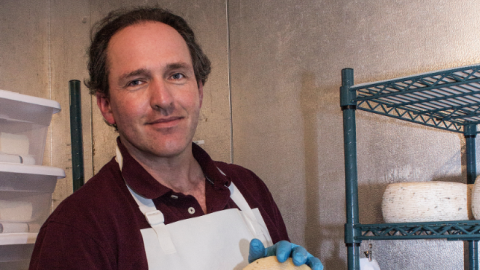Ingredients
- Fresh milk (Smits recommends using whole non-homogenized milk for the best flavor, and as fresh as possible.)
- Citric acid or vinegar (about 1½ teaspoons of citric acid for 1 gallon of whole milk equals about 8 grams of cheese)
- Rennet
- Cheesecloth for draining the curds
- Hot water
- Salt
Instructions
Follow the instructions on the kits for measurements and amounts, adjusting slightly as needed. Smits says making fresh mozzarella is often a trial-and-error process that requires practice to become perfect.
Step 1: Heat milk to between 90° and 100°F.
Step 2: While maintaining the temperature and stirring constantly, add the citric acid or vinegar a little at a time until the pH measures between 5.2 and 5.3. Many home kits include papers to measure the pH, but a pH meter will provide the most accurate readings. This step takes about 5 minutes.
Step 3: Remove from heat, add the rennet and allow the mixture to set at room temperature for about 20 to 30 minutes. [crop step 3 so you don’t see the cheesecloth hanging]
Step 4: Cut the curds into large pieces, let them rest for a few minutes and stir gently. Wrap the curds in cheesecloth and let drain over a strainer until fairly dry and crumbly (anywhere from 30 minutes to 2 hours).
Step 5: Place the drained curd into a large bowl, add salt and cover with hot water that’s been heated to just under boiling. Wearing protective gloves, stretch the curd for a few minutes until soft and pliable. Squeeze the curd into balls of any size.
Step 6: The mozzarella is ready to eat immediately, or place the balls into a brine solution that measures 5.2 pH. The mozzarella will keep in the refrigerator in a closed container for up to two weeks.
* At Tulip Tree, Smits uses culture in place of the citric acid or vinegar most home kits recommend, which alters the timing of the process, the flavor and the appearance of the finished product somewhat.
Instructions by Cheesemaker Fons Smits of Tulip Tree Creamery




